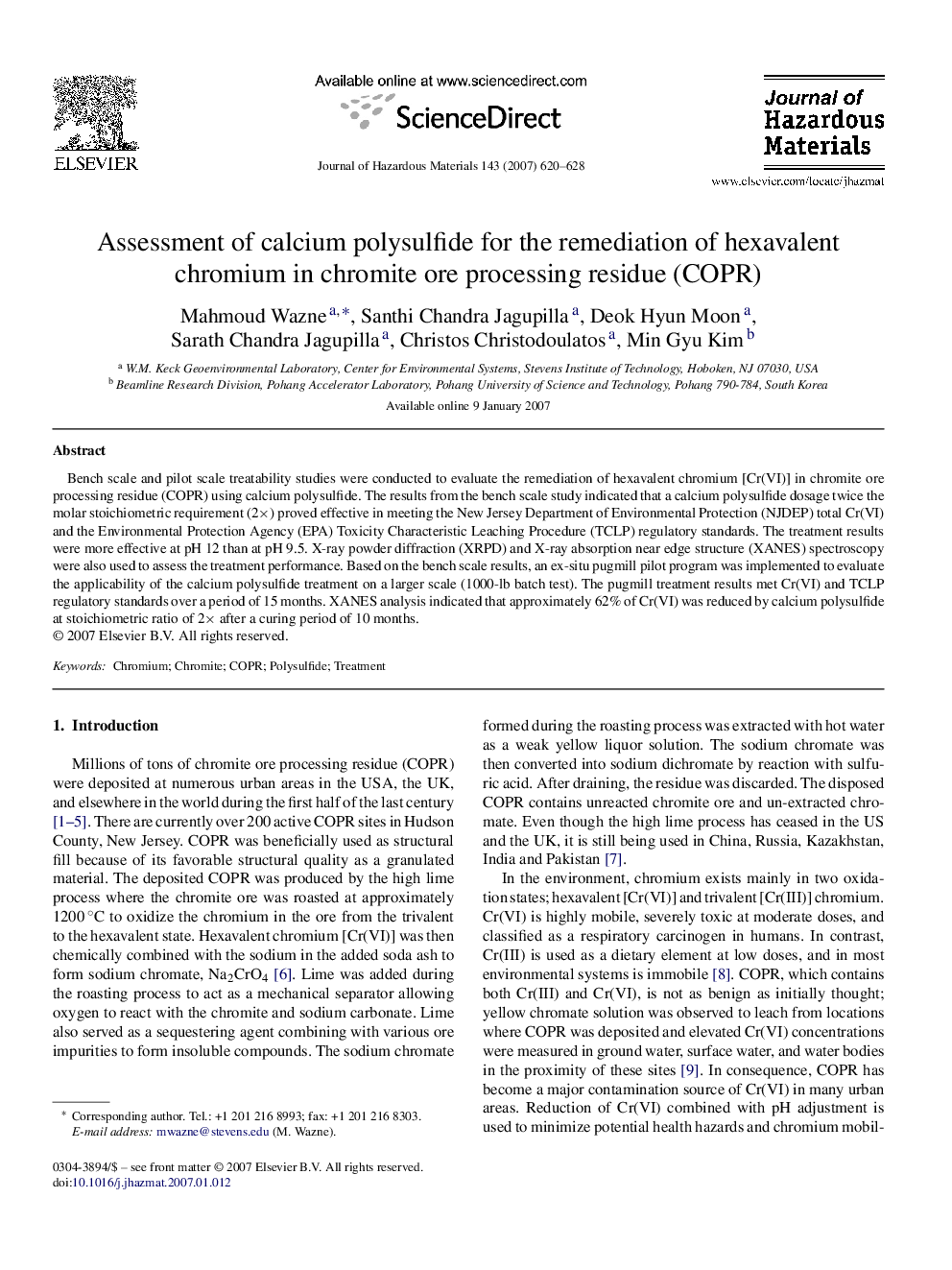| Article ID | Journal | Published Year | Pages | File Type |
|---|---|---|---|---|
| 584599 | Journal of Hazardous Materials | 2007 | 9 Pages |
Abstract
Bench scale and pilot scale treatability studies were conducted to evaluate the remediation of hexavalent chromium [Cr(VI)] in chromite ore processing residue (COPR) using calcium polysulfide. The results from the bench scale study indicated that a calcium polysulfide dosage twice the molar stoichiometric requirement (2Ã) proved effective in meeting the New Jersey Department of Environmental Protection (NJDEP) total Cr(VI) and the Environmental Protection Agency (EPA) Toxicity Characteristic Leaching Procedure (TCLP) regulatory standards. The treatment results were more effective at pH 12 than at pH 9.5. X-ray powder diffraction (XRPD) and X-ray absorption near edge structure (XANES) spectroscopy were also used to assess the treatment performance. Based on the bench scale results, an ex-situ pugmill pilot program was implemented to evaluate the applicability of the calcium polysulfide treatment on a larger scale (1000-lb batch test). The pugmill treatment results met Cr(VI) and TCLP regulatory standards over a period of 15 months. XANES analysis indicated that approximately 62% of Cr(VI) was reduced by calcium polysulfide at stoichiometric ratio of 2Ã after a curing period of 10 months.
Related Topics
Physical Sciences and Engineering
Chemical Engineering
Chemical Health and Safety
Authors
Mahmoud Wazne, Santhi Chandra Jagupilla, Deok Hyun Moon, Sarath Chandra Jagupilla, Christos Christodoulatos, Min Gyu Kim,
